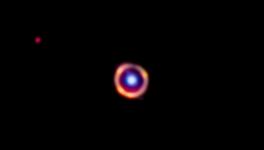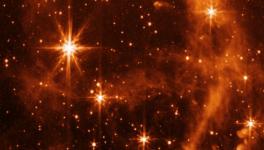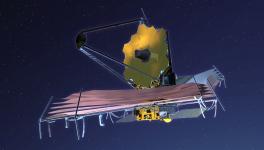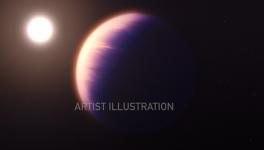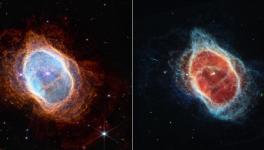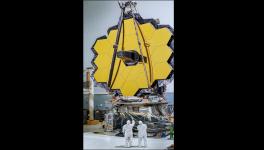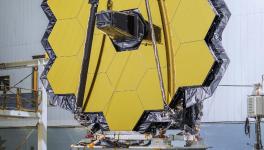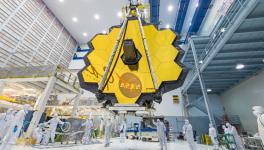James Webb Telescope May Have Spotted Some Most Distant Galaxies Ever Seen
The JWST. Image taken from Wikimedia used for representation only.
The James Webb Space Telescope (JWST), in space with its aim of discovering the early universe has recently reported to have spotted two objects that can be the most distant galaxies ever seen. The researchers after doing extensive scrutiny and re-evaluation have published the findings in two publications—first and the second.
However, researchers are still in the process of confirming the distances of these galaxies. They attempt to do this by analysing the spectral properties of the light emitted by them. The researchers say that if the initial estimates are correct, then these galaxies may have formed some 350 million to 450 million years after the Big Bang occurred. Experts opine that the findings indicate the formation of galaxies in the early history of the universe and have evolved over time than astronomers could have detected until now.
Expressing excitement about the findings, Jeyhan Kartaltepe, astronomer at the Rochester Institute of Technology, New York, said in a statement: “It’s been a bit of a surprise that there are so many that formed so early. And that is challenging ideas of how galaxies formed early in the Universe.”
Similar to many other galaxies that the JWST had observed, these two new-founds appear small and bright, which is suggestive of the fact that they are compact and disk-shaped objects. It is unlikely that these new found galaxies are diffused and irregular. These also suggest that early galaxies had well-organised structures rather than only distorted and faint objects.
With an expense of $10 billion, the Webb telescope is expected to have a lifetime of 10 years in space. The Webb has a mass of 6,200 kilogrammes.
A primary target of the observatory will be the epoch where the early pioneering stars whose light ended the darkness theorised to engulf the cosmos shortly after the Big Bang happened, a time of more than 13 billion years ago. The nuclear reactions in those celestial objects would have given birth to heavy atoms like carbon, nitrogen, oxygen, phosphorus and Sulphur, essential for forming lives.
The other aim of the Webb of studying atmospheres of distant planets may help researchers judge if there are any such planets outside the solar system that are habitable. The JWST uses infrared wavelength to study the universe.
The Webb differs in several aspects from its predecessors like the Hubble. The first is the capability of the observatory in its 6.5-metre-wide golden mirror, which is three times wider than the primary reflector of Hubble. The enlarged reflector combined with the sensitive instrumentations that the Webb has enable astronomers to have a deeper look into the space and go back in time than was achievable ever before. The large reflector has 18 segments, each having tiny motors on the back. The reflector will have to be focused so that it can receive infrared wavelengths from the early stars of the universe. The motors adjust the curvature of the reflectors.
Astronomers use ‘redshift’, which is a way of measurement signifying how far the galaxies are. Higher the redshift, larger is the distance. The newly found distant galaxies by the JWST has redshift of 10.4-10.6 in one and 12.2-12.4 in another. The latter one breaks the previous record of the Hubble telescope where it detected distant object with redshift 11. There have been other distant galaxies detected by the JWST which are under peer review that may surpass the redshift of 12.4.
Get the latest reports & analysis with people's perspective on Protests, movements & deep analytical videos, discussions of the current affairs in your Telegram app. Subscribe to NewsClick's Telegram channel & get Real-Time updates on stories, as they get published on our website.









